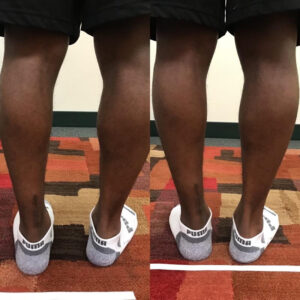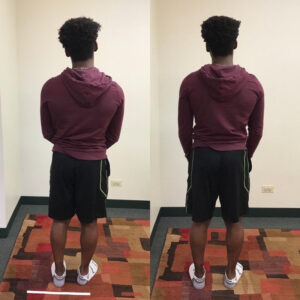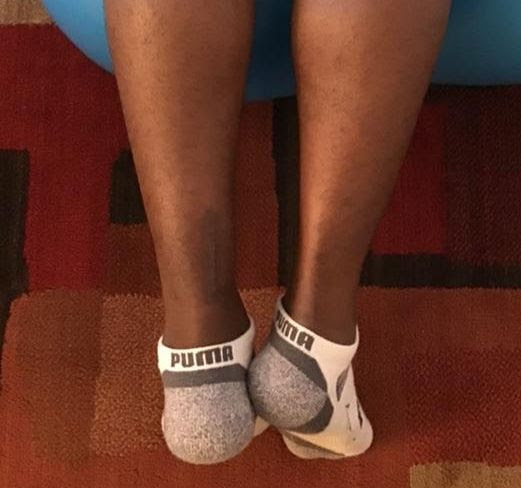Post Procedure – Achilles Repaired, Ready to Compete?
Medical Procedures: Adding Bridging® for a Full Recovery
“Wow! – now my leg feels light!
The tightness in my ankle is gone; it’s moving like it used to!
And my calf muscle has some strength again!”
Last March, the high school track star landed his long jump but couldn’t get back up without pain.
Off to the emergency room. Torn Achilles tendon on the left leg. Surgery was required for repair. After weeks of rehab, he was cleared to run again in July. His ankle and leg didn’t feel right, so some additional physical therapy was prescribed to strengthen the leg. He was discharged with no restrictions in October.
With track season around the corner, Mom wanted to make sure his leg and core function was the best it could be. They scheduled an appointment at Kinetic Konnections in January. They were amazed at how much just one session helped with strength and flexibility! (The photo above is what we found to begin with.)
Accidents happen to even the most conditioned athletes. See how Bridging® was able to help.
Connecting details, and matching up the big picture
One of the most basic Bridging concepts following a surgery is to use gentle movement to restore movement flow through the affected area. By gently matching up the movement and flow within the affected area, the circulation, communication, and coordination on both sides are able to quickly re-establish themselves.
During our assessment we noted a lack of fluent movement available in the entire leg with the torn Achilles. Hip movement for rotating and extending was especially limited. These movements are essential to both running and absorbing the force of landing a jump.
 |
Should the legs match?Just standing, it is easy to see how alignment and weight distribution are not the same between his left and right feet. (Left had surgery.) After the session, the entire set of feet, ankles, and calves look more symmetric, and ready for running. |
 |
What about the core?It was clear from the assessment, both visually and from a movement perspective, that his core was off center. This is likely due to compensations developed while on crutches and in a boot. We began with re-centering movement in the core. Then we added the movement flow from the foot, ankle, and leg to his core. Now his core can help with the run, take-off, and landing for the long jump. He even looks stronger! |
Specific ways that Bridging speeds up your recovery
Some of the common issues you have after surgical injury repair and what the Bridging technique’s framework finds:
- Odd pains at the ankle or hip. After your surgery, there are compensations just to get through a day while letting incisions heal. Although compensations typically occur at the hip and knee, a physical therapist’s prescription and protocols often limit their focus to just the foot and ankle. The Bridging assessment quickly surfaces areas of compensation and clears them.
- Prior injury contributions. The track star had a prior lower back injury which was immobilized while healing. Because of this, the movement from his legs had a hard time connecting to his great core strength. This is an example of the importance of also looking at how the core interacts with the limbs, a fundamental assessment step in the Bridging process.
- Restoring complex movement capability. The ankle and knee have to coordinate with a wide range of foot and hip and core movements. Bridging is able to easily sift through many of those quickly, to find specifics which are compromised and restore them.
All of your compensations, and the complete set of ankle, leg, and core functions are taken into account and addressed with the Bridging technique used by Kinetic Konnections.
Wondering if Bridging can help you?
When you have a medical procedure done, let Kinetic Konnections be your next stop. All invasive procedures have some impact to the fluency of movement in your body. The stress created often translates into pain or tightness for you.
Often in one or two sessions our use of the Bridging Technique’s gentle movements restores your movement in the impacted area. You feel better, and often the area looks better! Less swelling, better movement, better coloration, and faster overall recovery.

